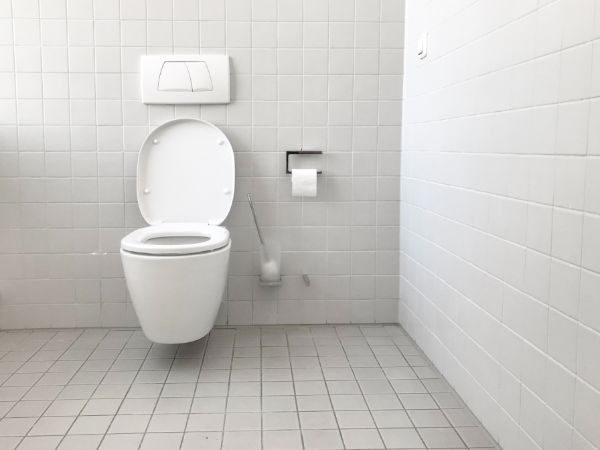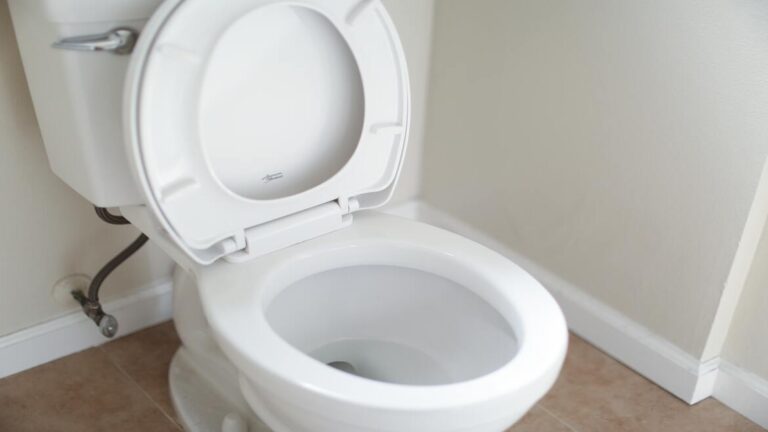Your toilet water has suddenly turned a nasty shade of brown. Although this is not dangerous, it is also not a simple problem to solve. After flushing, brown water in the toilet is typically just a common piping issue. Alternatively, it could be due to a damaged well, rusted toilet parts, or hard water mineral buildup. Read this article and learn how to fix the brown water in your toilet.
What Causes Brown Water In Toilet
Worn Out Toilet From Use
The toilet may deteriorate after frequent use. It’s possible that your toilet’s creases haven’t been cleaned in a while. Flushing your toilet thoroughly and thoroughly cleaning the bowl with a brush are both recommended. Verify that all of the trash has been removed, then check to see if the brown water problem still exists.
Rusted Pipes
The first thing to do is to check each and every tap in your house, from the kitchen sink to the shower in the bathroom. Every faucet in your home should be turning out brown water if this is the case.
It follows that your water contains an excessive amount of iron. This is particularly true for residences that use well water and for cities where the water supply contains more iron than the average city. Rust levels may become abnormally high and present a problem in such circumstances.
It’s entirely possible that your water supply has corroded and your iron pipes are old. Your water supply is dispensing that foul-smelling brown water because of such old pipes.
If so, you’ll need to contact a licensed plumber to assess the problem and make the necessary repairs. In some cases, if the rust has been a persistent problem for a while, it may have stained your porcelain bathroom fixtures, necessitating the replacement of said fixture.
How To Fix Brown Toilet Water
Clean The Toilet Tank
In contrast to other fixtures where the water is drawn directly from the pipe, a toilet temporarily stores the water in the tank.
The period of time the water remains in the tank allows the dissolved minerals to settle at the bottom of the tank and form a layer of sediment.
When the toilet is flushed, the sediment is stirred, which causes the sediment to dissolve in the water, which is how the brown water inside the toilet is created.
Simply cleaning the tank is the answer to this issue. By doing so, you’ll get rid of the sediment and guarantee that the water inside the tank is clear.

Call The Water Department
Due to the buildup of debris in pipes and water tanks, water utility companies will occasionally flush out the sediment, which, as you might have guessed, will end up in homes.
Another thing that can blow sediment from the city water pipes to people’s homes is testing and flushing of water hydrants.
When there is a leak or other type of repair in the main water supply lines, the dirt that has already built up in the pipes will wash up towards the homes and cause the water to turn brown.
You can check if one of the aforementioned occurrences is occurring by calling your neighborhood water department and asking.
If that is the case, they will advise you to open all of your faucets and let the water run for about 10 minutes, or until the water is clear.
Check If There Are Leaks
The city water supply line is close to the street and is connected to your home. The service line is the main water pipe that runs from the street to your home.
Galvanized steel pipes, which are used in many homes for the service line, will eventually begin to leak.
It’s possible that you are unaware that the water pipe’s bottom is always covered in sediment. Usually, pipe corrosion, dirt, and mineral deposits make up the sediment.
The sediment layer is disturbed when the pipe begins to leak, and as a result, the sediment disintegrates in water and seeps into the house. You might have brown water in your toilet because of this.
Even more so after a storm, a leaky pipe can let contaminated water enter the water supply system.
Locate your water meter to see if you have any leaky pipes. The water meter will have a concrete or steel lid and be situated close to the sidewalk or curb.
Additionally, check to see if any of your home’s fixtures are on. There shouldn’t be a drop of water used in the house for this test to be successful.
Replace Water Pipes
Corrosion in the pipes is the main cause of brown water in toilets, sinks, and other fixtures. In order to stop corroding, zinc was essentially coated on old galvanized steel pipes.
The zinc coating, however, eventually peeled off, exposing the iron to oxygen where it reacted to create iron oxide, also known as rust.
Rust buildup inside water pipes reduces flow because of the obstruction it causes. Brown water is forced into toilets and other fixtures as a result of the rust eventually flaking off due to water pressure.
Additionally, the rust can clog faucet aerators, and fill valves for toilets and dishwashers, valves for washing machines, and shower heads, leading to early appliance failure or low water pressure.
Try Hydro Jetting Your Water Pipes
Brown water in toilets and other fixtures can also be eliminated using hydro jetting. Pipes don’t need to be replaced all the time.
In actuality, brown water is possible even with copper or plastic pipes. This is especially true if your home uses hard water.
The pipes will become filled with iron deposits, which will cause the water to turn brown. Also forming a layer of sediment in the pipes is rust from the city water pipes.
In hydro jetting, pipes are cleaned and all clogs and debris are removed using water under extremely high pressure.
Have Your Well Inspected
You might most likely be dealing with a damaged well if you use water from a well. Construction work, landscaping, storms, or natural occurrences like earthquakes are some of the common causes of that.
This results in the dissolved organic material and dirt in your home’s water supply, which is the cause of the brown discoloration in your toilet water and other faucets.
Unfortunately, you cannot repair a well by yourself, with the help of a handyman, or with just any plumber. A specialist in that area will be required to conduct an initial inspection before providing a solution.
Install A Water Softener
Installing a water softener if you don’t already have one is highly advised, especially if you live in a region with hard water.
Iron, calcium, and manganese that are present in hard water are removed before they enter your home using a process known as ion exchange.
Installing a water softener will also prevent the corroding of your water pipes and the staining of your sinks, tubs, and other fixtures.
Iron and manganese are particularly responsible for the hard water stains found in toilets and other fixtures.
Whether you use water from a well or from the city, a water softener can be installed. While a little pricey to install, these units are also simple and inexpensive to maintain.





